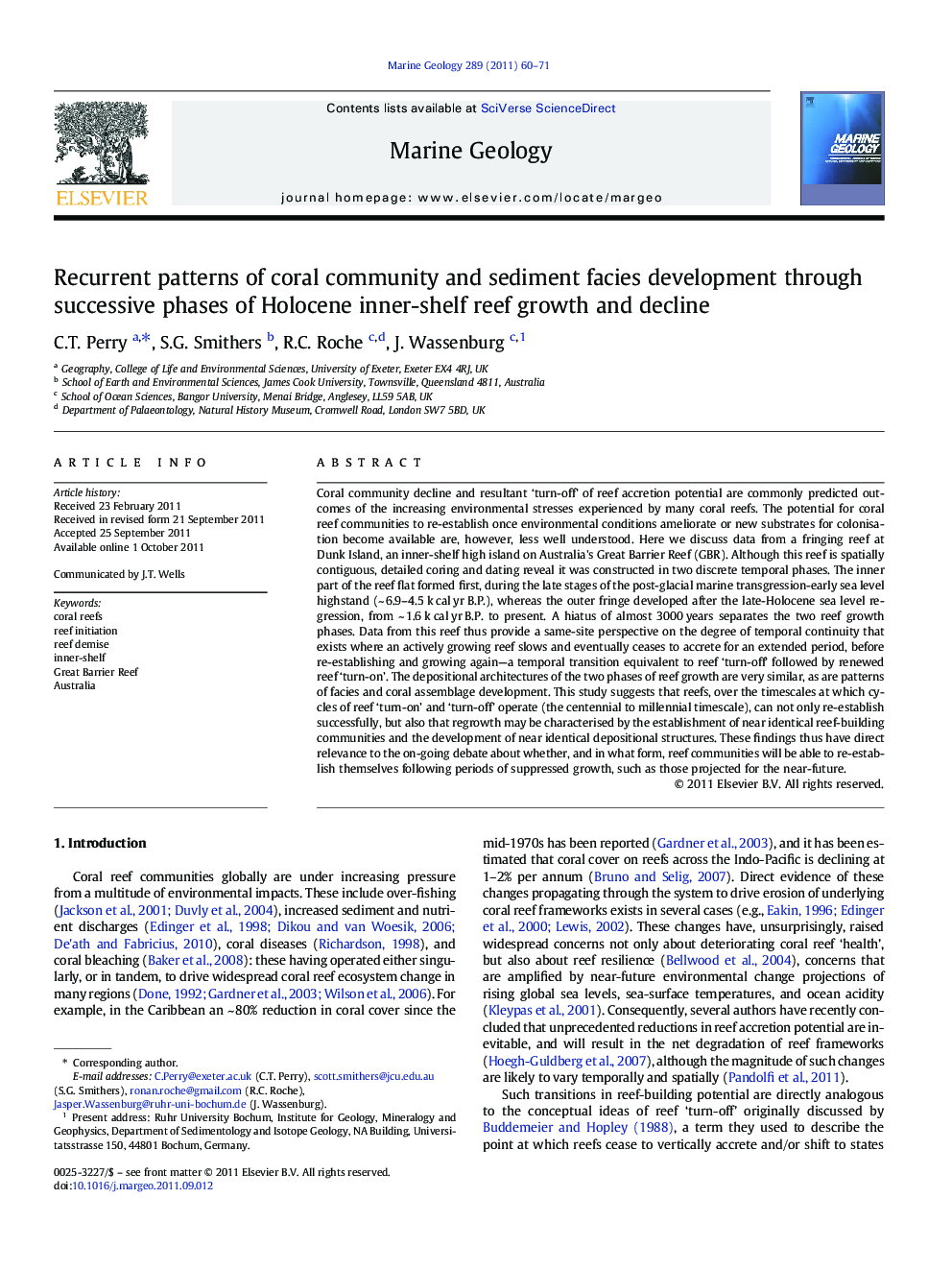| کد مقاله | کد نشریه | سال انتشار | مقاله انگلیسی | نسخه تمام متن |
|---|---|---|---|---|
| 4718683 | 1639131 | 2011 | 12 صفحه PDF | دانلود رایگان |

Coral community decline and resultant ‘turn-off’ of reef accretion potential are commonly predicted outcomes of the increasing environmental stresses experienced by many coral reefs. The potential for coral reef communities to re-establish once environmental conditions ameliorate or new substrates for colonisation become available are, however, less well understood. Here we discuss data from a fringing reef at Dunk Island, an inner-shelf high island on Australia's Great Barrier Reef (GBR). Although this reef is spatially contiguous, detailed coring and dating reveal it was constructed in two discrete temporal phases. The inner part of the reef flat formed first, during the late stages of the post-glacial marine transgression-early sea level highstand (~ 6.9–4.5 k cal yr B.P.), whereas the outer fringe developed after the late-Holocene sea level regression, from ~ 1.6 k cal yr B.P. to present. A hiatus of almost 3000 years separates the two reef growth phases. Data from this reef thus provide a same-site perspective on the degree of temporal continuity that exists where an actively growing reef slows and eventually ceases to accrete for an extended period, before re-establishing and growing again—a temporal transition equivalent to reef ‘turn-off’ followed by renewed reef ‘turn-on’. The depositional architectures of the two phases of reef growth are very similar, as are patterns of facies and coral assemblage development. This study suggests that reefs, over the timescales at which cycles of reef ‘turn-on’ and ‘turn-off’ operate (the centennial to millennial timescale), can not only re-establish successfully, but also that regrowth may be characterised by the establishment of near identical reef-building communities and the development of near identical depositional structures. These findings thus have direct relevance to the on-going debate about whether, and in what form, reef communities will be able to re-establish themselves following periods of suppressed growth, such as those projected for the near-future.
► Reduced reef accretion is a commonly speculated outcome of environmental change.
► How reefs respond once environmental conditions ameliorate is poorly understood.
► We examine these responses across two discrete, same-site, phases of reef-building.
► Both reefs exhibit similar sediment and coral assemblages, and architectural styles.
► These findings thus inform the debate about future reef (re-)growth trajectories.
Journal: Marine Geology - Volume 289, Issues 1–4, 1 November 2011, Pages 60–71